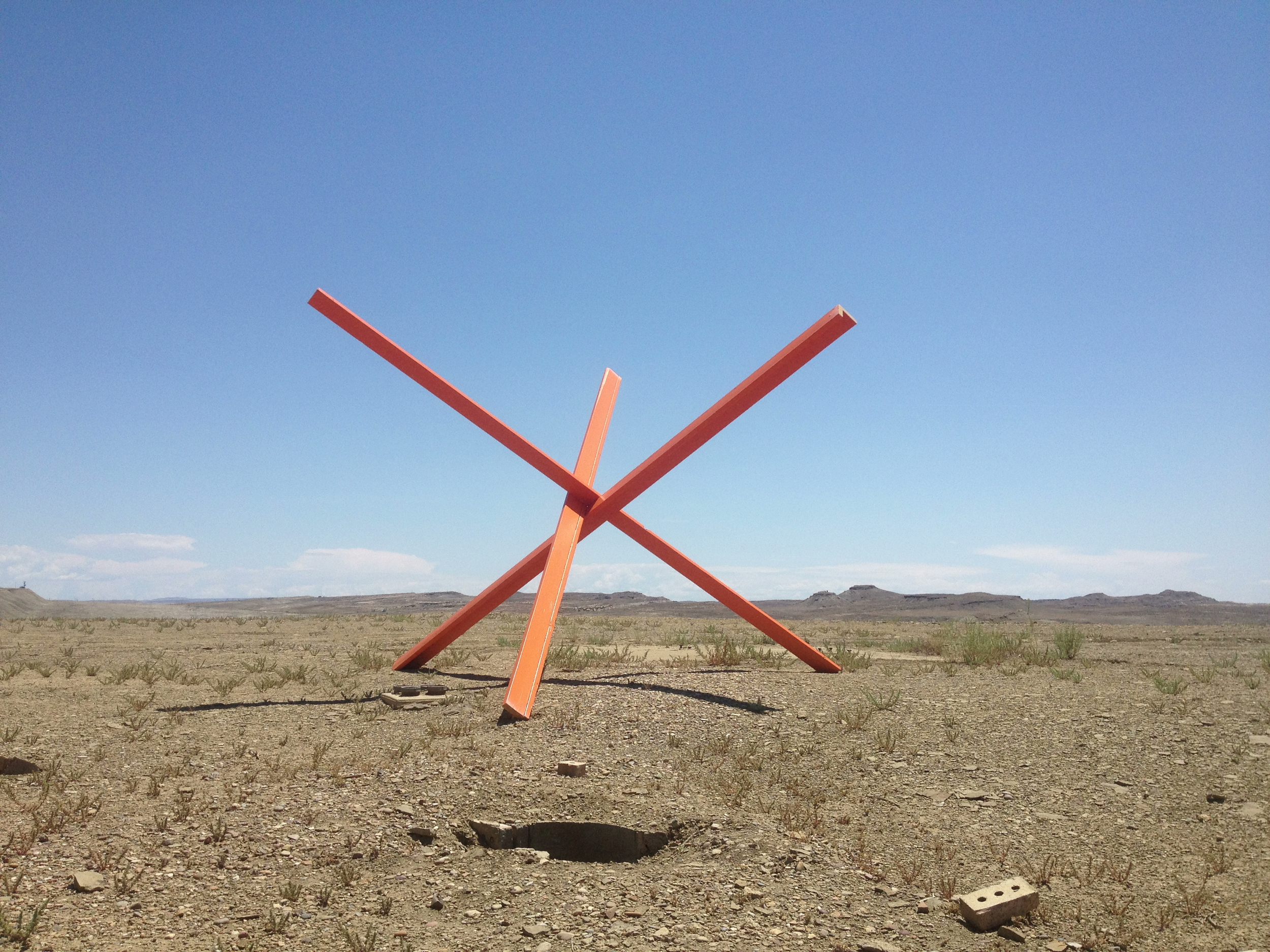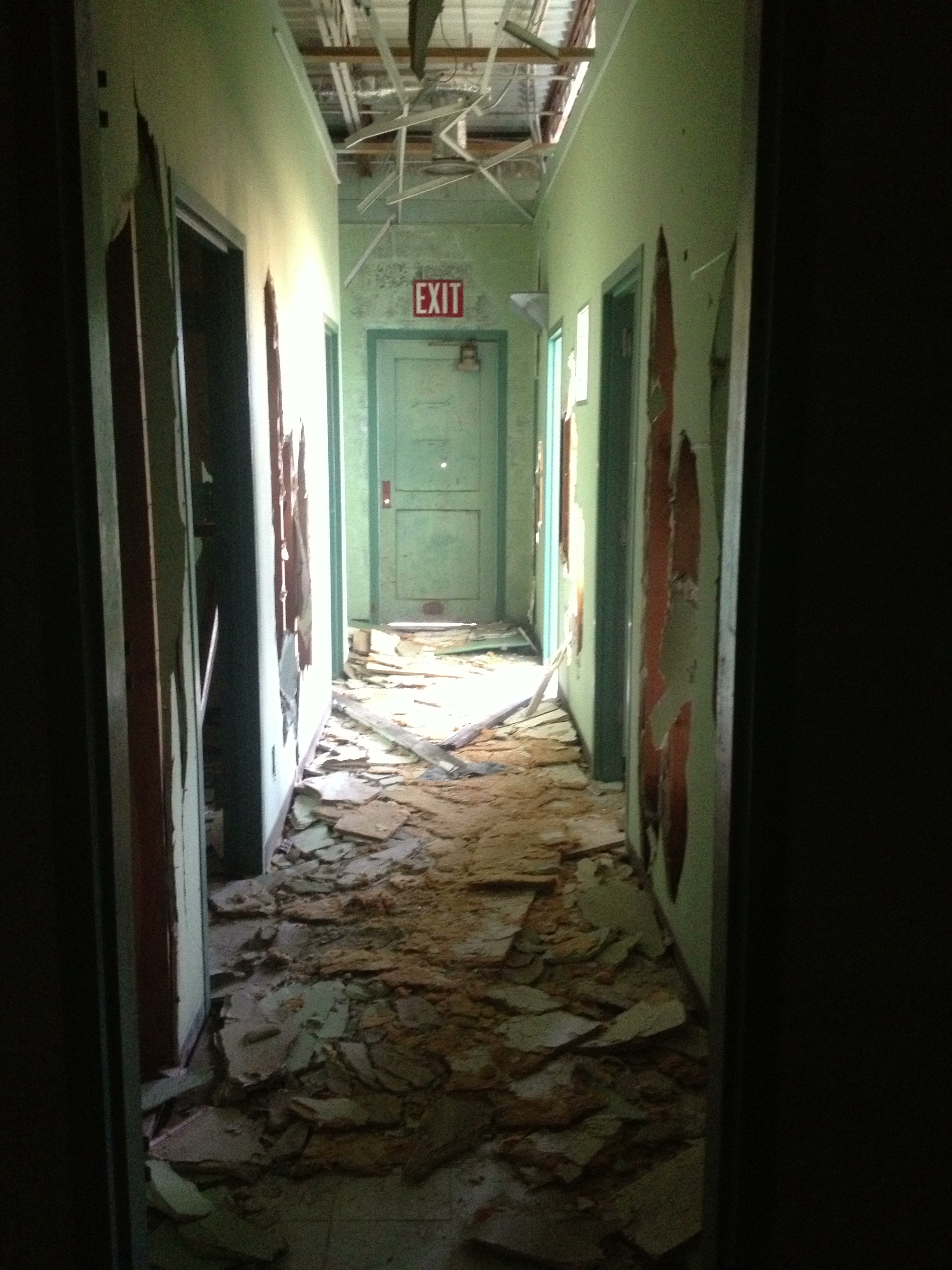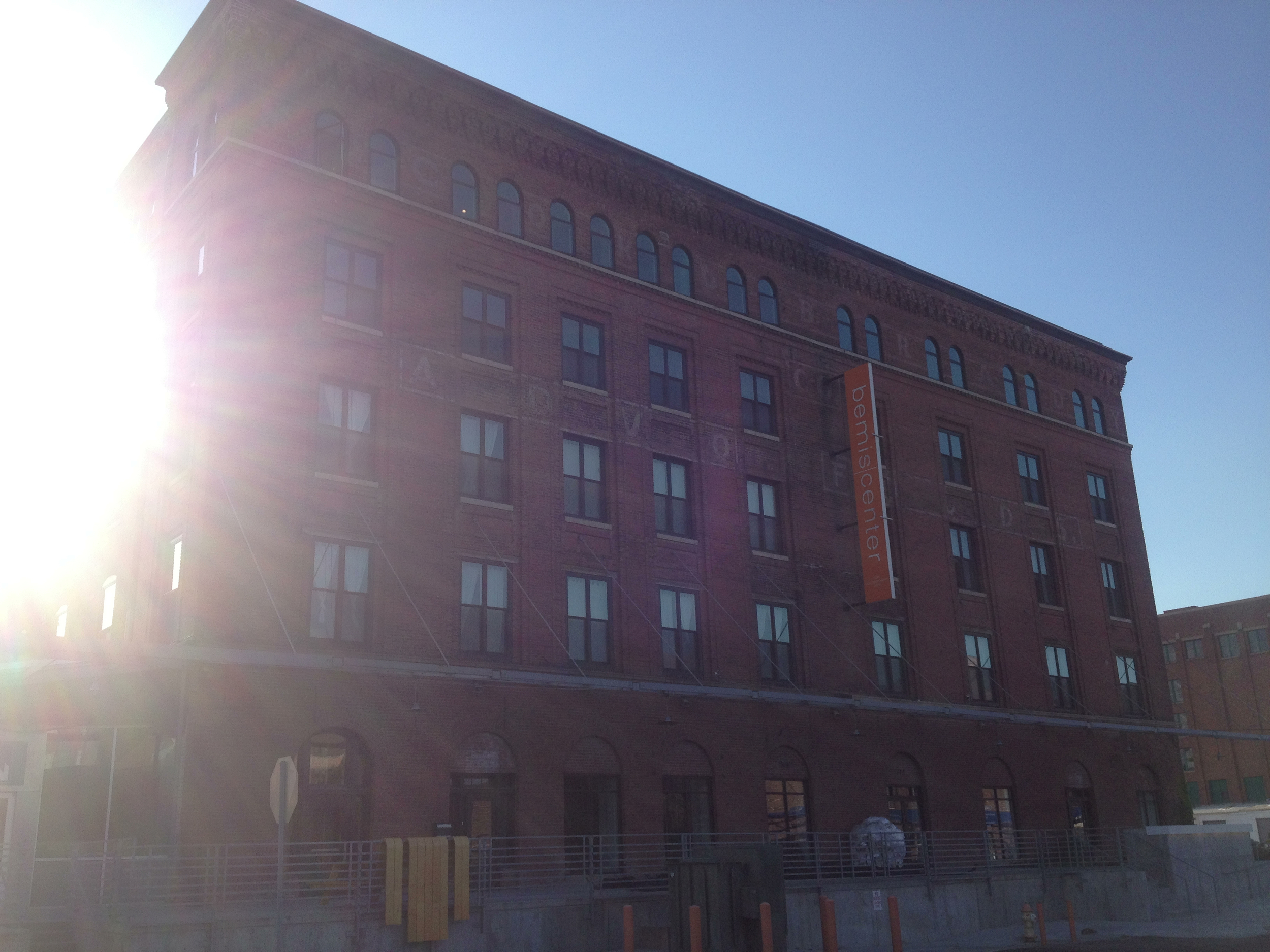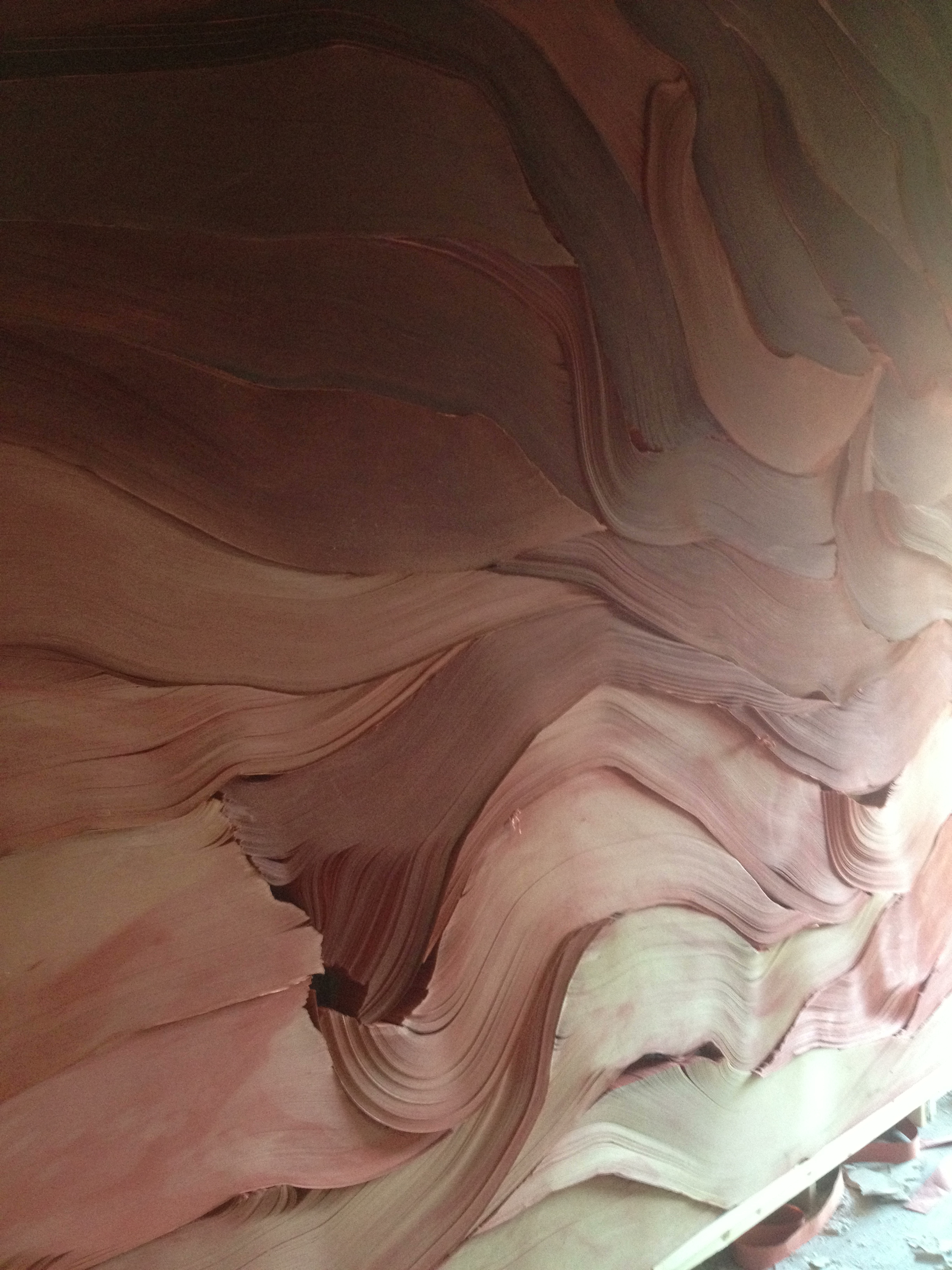Guerilla Road Trip Pt. 2
After the mysteries of West Texas, me and the lady packed the 'rolla tight and wound our way through New Mexico and onto my former home, Arcosanti. I had an overpowering sense of deja vu descending from Flagstaff and seeing the Arco skyline from the highway: the overturned boat hull of the Vaults, the white roofs of the East Crescent, all studded with tall cypress and gnarled olive trees.
The Vaults, the eighth silt cast wonder of the world.
After a check-in at the gallery, and a wan smile or two of faint reminiscence with the staff, we drove down the guesthouses. Said guesthouses were right under the project I worked on for the majority of my time at Arco, shoring up the cliff under the pool. The pool, and the cliff, were still there, with many more panels set up to the east to prevent future erosion. I was proud to see that work alive and (mostly) well, a sort of vertical landscape to be climbed upon, explored, and used for purposes beyond its structural necessity. On the slope in front of the guest rooms were the foundations of a new set of greenhouses. Behind the guest rooms was a functional, if temporary, greenhouse, set up as a way to test the Heat Duct Tunnel.
The 3-D landscape under the pool, holding up the deck and holding back the cliff.
A few of the portholes we incorporated for kicks.
Footings for new greenhouse in front of the guest rooms.
The lush interior of the test greenhouse.
I was disappointed, though not surprised, to learn that almost no one from my time there still lived at Arco. My old boss was out of town for a few weeks, so I couldn't get a more detailed report on the construction of the greenhouses. I have been following the debate from afar, however, and it seems to mired in the same muddy process as always: endless debates, fueled by the lack of money, high resident turnover, and the horizontal management structure. The greenhouse seems stalled for now, and there is no clear direction forward in the wake of Paolo's death a few months back. Internal politics aside, the whole place seemed like a place outside time, lost to the current world. We ended the evening in the best place, discussing these very points with some current workshoppers while watching the sunset on top of the vaults.
From camp.
Sunset from the vaults.
From Arco, we hit all the good national parks (Grand Canyon, Zion, Arches) clustered in that area, checked out Moab, and then drove through the wind-scoured Mars-scape of western Utah into the town of Green River. An acquaintance of ours from Alabama, Jack Forinash, started a small non-profit out there a few years back called Epicenter. Closely modeled on H.E.R.O. in Greensboro, Epicenter seems to be a catch-all organization for the town, running a summer camp, an arts residency, a Habitat for Humanity Chapter, a thrift store, and pursuing general economic development.
The Epicenter.
You Are Here.
We spent a day poking around with an affable graphic designer, Jason DIlworth. Though a Utah native, he now lives on the east coast and was in town for a few weeks to run a workshop on furniture design using beetle-kill wood from western forests. AmeriCorps volunteer Armando Rios served as our tour guide. First, we went to an abandoned military base on the edge of town where an artist had installed some sculptures based on WWII tank barriers. Then, it was off to the Habitat House, the thrift store, the propane tank painted like a watermelon, and the Crystal Geyser. Though it failed to perform for us, the geyser was a beautiful rock formation crusted with brilliant minerals. We ended the day with a swim in the river and ghost stories about skinwalkers, the Vernal Relief Mine, and UFOs.
Sculpture on the military base.
Damn. I do love an abandoned building. Bonus points for being a military base . . .
Crystal Geyser is the pipe in the back right of the picture.
The minerals up close.
After Green River, we met a friend for a few days in microbrewtastic Boulder, Colorado, then meandered up to Omaha, Nebraska. Omaha is not a town you hear much about -- Warren Buffet lives there, sporting events have been known to occur, but it is one of the those sturdy Midwestern towns that never gets attention like Chicago or Minneapolis. We knew nothing going in, and were pleased to discover a vibrant arts scene and amazing food, against a backdrop of geometrically pure, vastly-scaled early-century industrial architecture. Thanks to some friends at the ReBuild Foundation, we were able to stay at the Bemis Center, right in downtown, which offers long-term artist residencies to folks from all over the world alongside a diverse array of other programming.
The Bemis Center.
Cropped portion of an installation being installed int he lobby, made of strips of paper showcasing the former life of the Bemis building, an old paper box and packaging factory.
Our studio for the night.
It was really nice, with tall ceilings and huge windows, an archetype of the artist's loft.
The next day, we checked out Carver Bank, a collaboration between Theaster Gates and the Bemis Center. Jessica Scheuerman, the director, was generous enough to give us a lovely tour. The old bank building and an adjoining property, situated in a historically black neighborhood in North Omaha, have been renovated into an art gallery, studio space, and a sandwich shop. Studios are available for artists-in-residence from the surrounding neighborhoods, with a focus on artists of color. The space is full of ReBuild details, built out with reclaimed materials and hand-crafted elements. We took in the work, had a sandwich at Big Mama's, and spent the rest of the day absorbed in a search through Omaha's many thrift stores and flea markets. On our way back to Chicago, at a crossroads in Iowa, we finally hit pay dirt: two tractor seats, for a future guerilla furniture project to be chronicled right here.
Carver Bank.
Inside the gallery, featuring work by LaMont Hamilton.
Work-in-progress by Bart Vargas.
Oh, Mrs. Reagan, you had it so wrong: Just Say Yes!
Big Mama's sandwich shop, a masterpiece of small-space design by my colleague Charlie Vinz.
Tractor seats. To be continued . . .






















